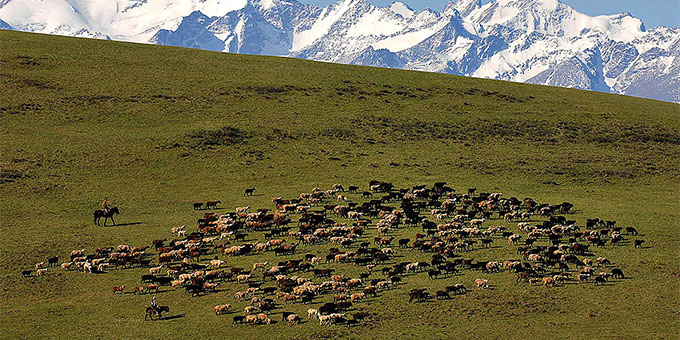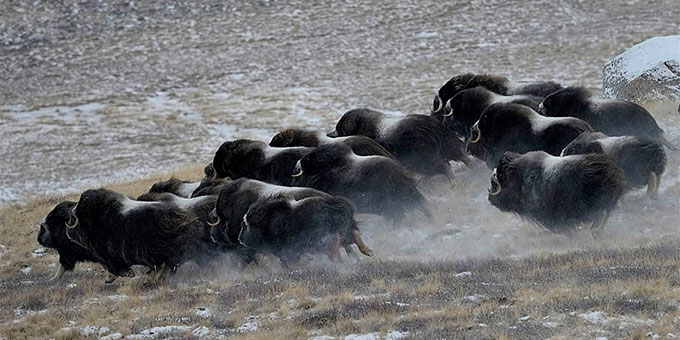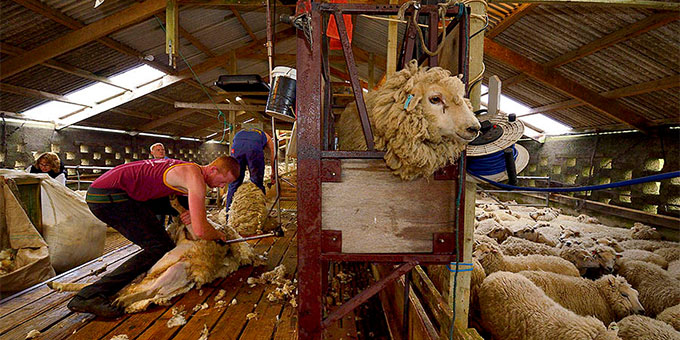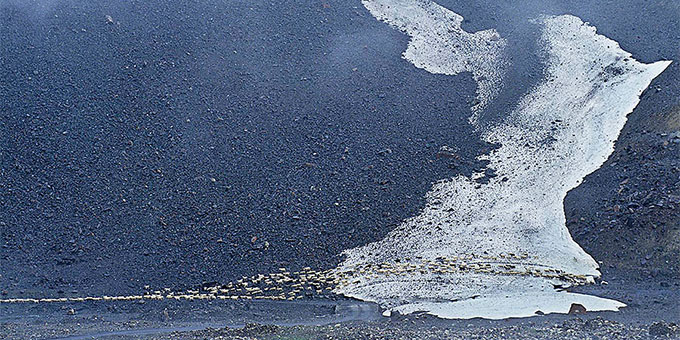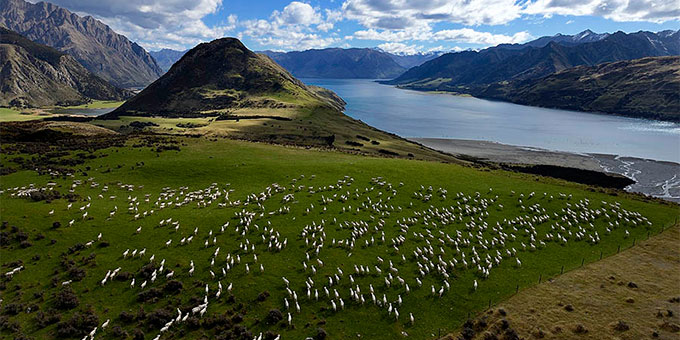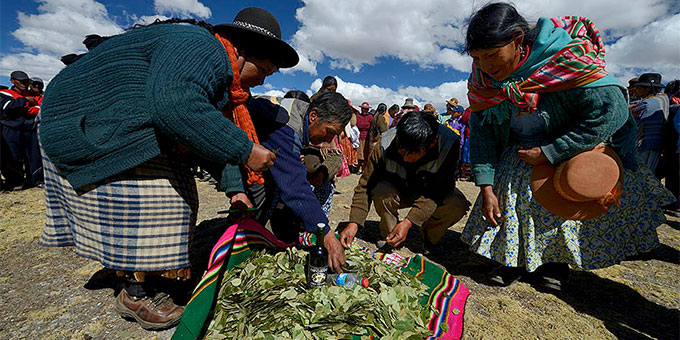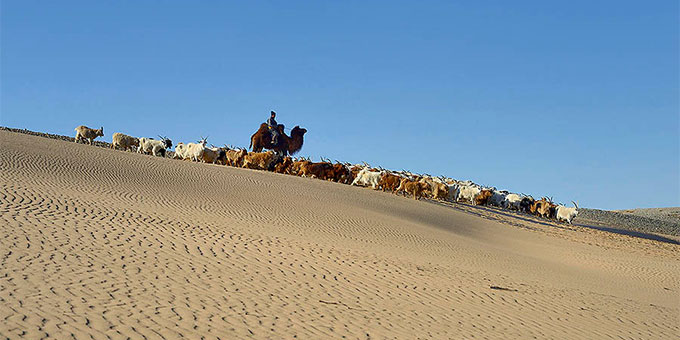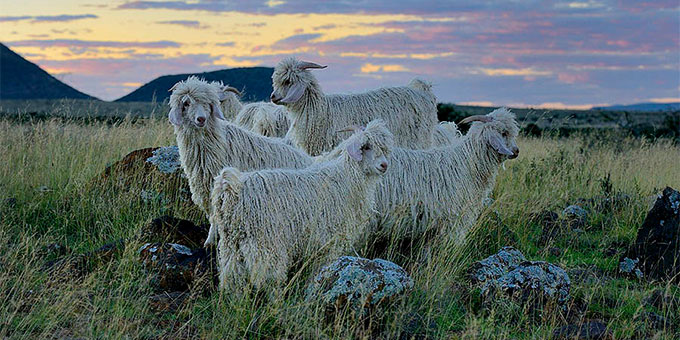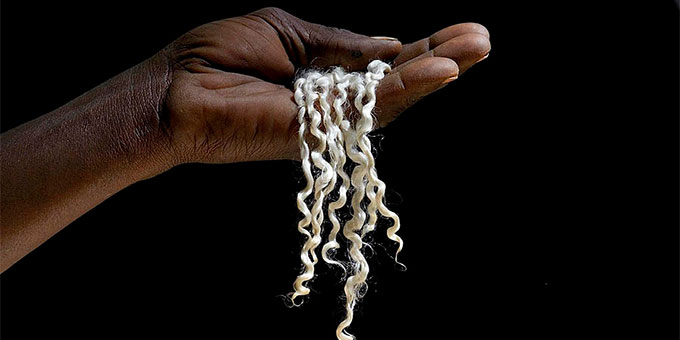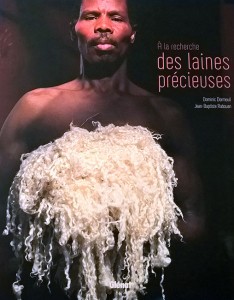Posted on December 21, 2015 in Arts & culture.
Beau-livre: Hunters of precious wools
The photographer, writer and journalist Jean-Baptiste Rabouan and the business manager Dominic Dormeuil, which has been manufacturing exceptional fabrics for high-end clothing and haute couture for five generations. book, a vibrant tribute to the peoples of wool. Meet Jean-Baptiste Rabouan for a journey to the heart of rare fibers…
This beautiful book is an unprecedented journey to meet producers of precious wools from Greenland to New Zealand, passing through Peru, Ladakh, South Africa, Scotland or even Central Asia… This quest rare fibers leads us in the footsteps of woolly animals, musk oxen, cashmere goats, pashmina or mohair, camels, merino or Shetland sheep, vicuñas and alpacas.
As far as we go back in history and that we venture on the five continents, wool protects the skin of men against cold bites and sun burns. Everywhere pastors raise herds from which they “harvest” the fleece which constitutes a real treasure.
Dominic Dormeuil explores the breedings of the world in order to select the rarest fibers from which his company produces exceptional fabrics intended for the biggest international fashion houses. He trained the reporter photographer Jean-Baptiste Rabouan across the steppes, the moors, the tundra and the highlands to pay tribute to these "wool peoples" whose herds and traditions are both so remarkable and so fragile.
How did the project for this book start?
I became interested as a photographer and ethnographer in nomadic peoples from the 90s. On my return from one of my reports at Ladâkh in India, I met Dominic Dormeuil, the president of the eponymous company. Very quickly, he transmitted the wool virus to me and made me discover an extraordinary universe between the breeder and the fiber. It is a relationship which is also very similar to that which can be experienced in wine. A beautiful wool is a territory, an animal, a breeder. Like a wine, it is a winemaker, a grape variety and a terroir.
At his contact, I started to see things differently. Dominic Dormeuil then entrusted me with several missions. Its job is to travel the world and seek from wholesalers, farmers and manufacturers the exceptional fibers, rare or new. For ten years, I accompanied him and we collaborated punctually. Last year, he told me that we should consider a big book on precious wools, as opposed to industrial wools. Over the past ten years, we have seen that globalization has affected almost all wool production and that many traditional breeders are on the verge of disappearing. So we left for a year and we went around the world of rare wools. I was in charge of photos and a large part of the texts. Dominic, meanwhile, focused on the technical aspects.
Are there still woolen peoples?
Yes of course, there are peoples of wool who have produced wool for centuries, even millennia. Wool is still the most used textile fiber today. The production of industrial wool is omnipresent, but the medium and high-end market still calls on traditional breeders.
What is the common denominator between all these producers?
All are passionate. The Mongolian nomad when he is with his cashmere goats is proud of his fiber. The production of a fiber is directly linked to the way in which the farmer manages his flock. Because he can make either meat or wool. The more fat the animals are with good meats, the worse the wool and vice versa. These two factors vary according to the transhumance dates, the choice of pastures. The breeder intervenes very strongly in the production of the fiber of his livestock. He is obliged to take an interest in the quality of his product in order to know how to appreciate it and judge it.
How do you see their near future?
This includes the maintenance and development of the luxury industry. These breeders who produce fibers with passion produce few. Their animals need large pastures. There is no concentration and the modest productions are confronted with industrial farms which produce tons of cheap wool on intensive farms. The luxury industry keeps these farming traditions alive because it is still willing to pay the price for these communities to survive. Today we still do not have a controlled appellation on the different wools. We come to situations where on the wholesale markets, the price of industrial wool will compete with that of traditional wool. Large houses also have the advantage of being able to impose real traceability of products in order to guarantee them a name.
On what criteria did you choose the different destinations?
We were of course unable to make an exhaustive catalog as this was materially impossible. On the other hand, we were able to treat all the wools which have a particular character. The first criterion was that these wools could be woven. Be aware that not all fibers can be of sufficient quality, strength, length, fineness, to be spun and woven. The second criterion was to choose only legal wools because there are still today protected animals that are hunted and poached for their wool.
What was your photographic bias on this project?
With Dominic, we wanted this book to be above all a tribute to breeders. To do this, we strictly respected the rules of ethnographic reporting. We didn't do any staging. Everything is photographed naturally in situ. This is what makes this book credible as a testimony.
What follow-up could you give to this work?
I think this subject would make a very good documentary for film or television. We often see the models on the catwalks wearing beautiful fabrics and beautiful sweaters, but we do not necessarily realize that behind all this is a universe of breeders, traditions and ancestral know-how.
Interview by David Raynal
In search of precious wools by Dominic Dormeuil and Jean-Baptiste Rabouan. Glénat editions, 170 p., € 39,50
Drawing Now Art Fair: Tatiana Wolska winner 2024
The invention of language by Gertrude Stein and Pablo Picasso
The history of French women's golf at Golf du Sorbier






